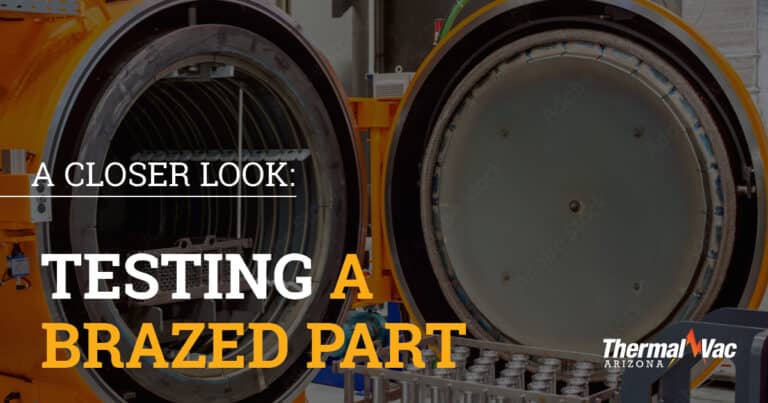You pride yourself on what products you offer and you want to have peace of mind about the quality of those products. When parts are released into the wild, will they stand up to the pressure of their environment or will they fail you?
Testing your brazed parts can help offer this peace of mind. You’ll get clear-cut diagnostics to ensure that what you’re using won’t be a liability down the road. So where should you start?
The integrity of a brazed joint is often mission-critical. Whether your products are golf clubs or components of an airplane wing, a strong joint is a critical element in meeting the engineering specs dictated by the design team and real-world pressures.
This is why the testing stage of the brazing process is so important. Modern technologies allow technicians to scrutinize the integrity of a brazed part with detailed precision. The result is confidence that the part can continue down the fabrication process chain and deliver the expected performance.
What is Brazing?
Brazing is when two or more pieces of material are placed against each other creating a space that will be filled with alloy in forms such as wire, mesh, foil, or paste. That space is called the braze joint. Once heated to high temperatures, the braze alloy melts into the joint, and the parts are permanently joined.
Brazing uses a variety of techniques to achieve a strong bond. The technique varies based on factors such as the size and shape of parts and the materials involved. Brazing by hand using a torch is adequate for some situations, but to properly braze parts made from exotic materials specialized equipment, such as a vacuum furnace, typically is required.
What’s the Difference Between Brazing and Welding?
Welding generally must be done individually for each part. Typically the process is performed using a weld rod and a torch. The rod is melted to add material to the part using localized heating. Because the heat is high and concentrated, it’s easy to get brown, purple, and blue discoloration as well as localized distortion. Wire brushing, beat blasting, straightening, and flattening may need to be done to fix these issues.
Brazing, on the other hand, can be done at scale. You can take hundreds, even thousands of parts, apply alloy, and process them all at once. Parts are heated uniformly in a vacuum furnace, resulting in a bright, shiny, distortion-controlled part.
Less clean-up and post-work allow you to ship parts much faster.
Brazing can be a time saver! What may take weeks or months for a welded part can take hours in a vacuum furnace.
What Does a Quality Brazed Part Look Like?
In a quality braze part, the parent material will fail before the braze joint fails. This is especially important in applications like aerospace where a product failure could mean that lives are on the line.
Why Test Anyway?
Testing and inspection of brazed parts provide the opportunity to detect nonconformance and damage, using various methods to ensure that the finished part will meet all requirements.
If parts are included in commercial aircraft, spacecraft, or anything involving people, a loss of life due to product failure is a genuine risk. Proactive testing and inspection can help avoid this.
You can feel good about the parts being put into the next level assembly, knowing that you’ve done the due diligence to work with a supplier that will provide a product that’s safe and well-made.
Let Thermal-Vac Arizona Help
Want to ensure the level of quality of your brazed parts? We’ll work with you to discuss the applications and quantities of products you may have. We have hardness testing, pressure testing, and helium leak testing available in-house. Our inspectors and processors work to create consistent and conforming products in the shop per your specifications.
For all your other testing needs, we know where to go to get it done. We’ve got great partners, preferred suppliers, and trusted sources that we can recommend to send parts out to and test to the nitty grittiest level of detail. Contact us to learn more and get started.
